│By Grace Pashley, Gale Ambassador at the University of Birmingham│
Learning styles are something every teacher introduced to us at one point or another – a buzz word in revision sessions, and an excuse to take a quiz during lesson time! But what are learning styles and how can we benefit from knowing our own? There are three different types of learning styles: visual, auditory and kinaesthetic (or tactile, movement-orientated) learning. Knowing which group you fit within, and tailoring your studies to best cater for your strengths and weaknesses, can massively impact your overall educational experience.
Which group do you fall within?
Read the descriptions below and choose which best describes you:
- Visual learners absorb knowledge best through visual formats – through diagrams and pictures, or by using bright colours and flashcards which capture their attention.
- Auditory learners process information best by hearing about different concepts, by repeating phrases, or reading new material out loud.
- Kinaesthetic learners understand best by engaging in demonstrations of the task at hand, whether that be through movement-orientated tasks or by acting out the task.
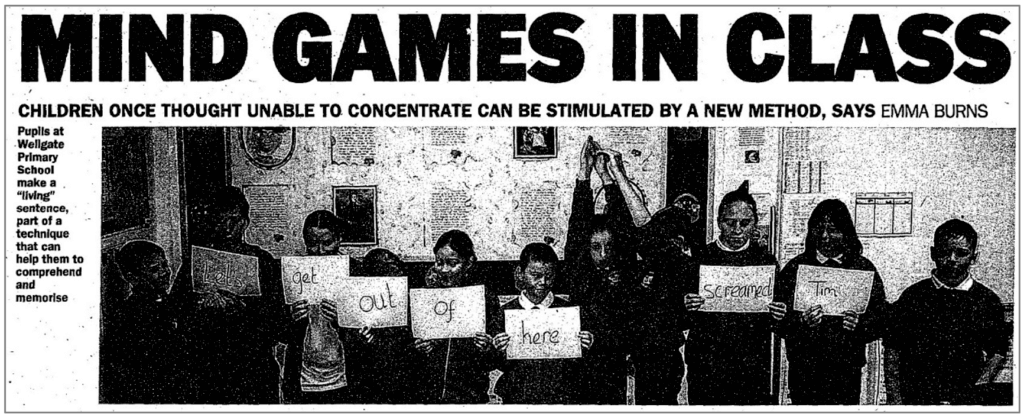
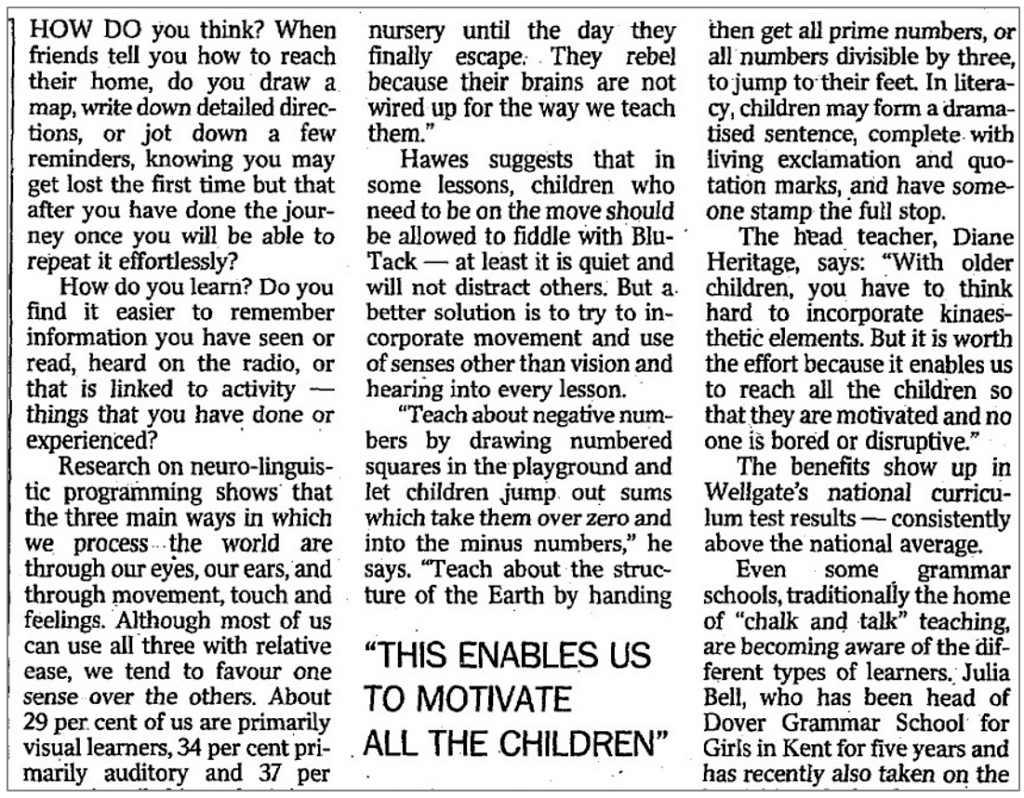
Burns, Emma. “Mind Games in Class.” Times, 22 Oct. 2003, p. 18[S]. The Times Digital Archive, https://link.gale.com/apps/doc/IF0502519939/TTDA?u=webdemo&sid=bookmark-TTDA&xid=33b66a8c
Why are learning styles important?
One of the most valuable things gained from knowing your learning style is the ability to improve your learning experience, knowledge and skillset. It can give you an advantage compared to other students as you are more aware of your strengths and limitations. Learning styles are considered an important part of students’ curriculum and variations in learning style are often incorporated into lesson plans, to ensure all students are included, and can learn equally.
A tool for visual learners
I am a visual learner. One result of this is that I find it useful to see the bigger picture before I start researching a given topic, so the Topic Finder tool in Gale Primary Sources is particularly helpful to me. Through its visual layout, the tool allows words and subjects associated with the topic to be examined in a more creative way. To create the visualisation below, I used this tool within the Daily Mail Historical Archive, typing in the term ‘social media’. Then, using this visualisation, I was able to focus on key words which appeared throughout the newspaper, such as ‘terror’ and ‘teens’, and also form connections of my own. I found, as a visual learner, I was far less intimidated to start delving deeper into the content of the Daily Mail Historical Archive after using this Topic Finder tool.
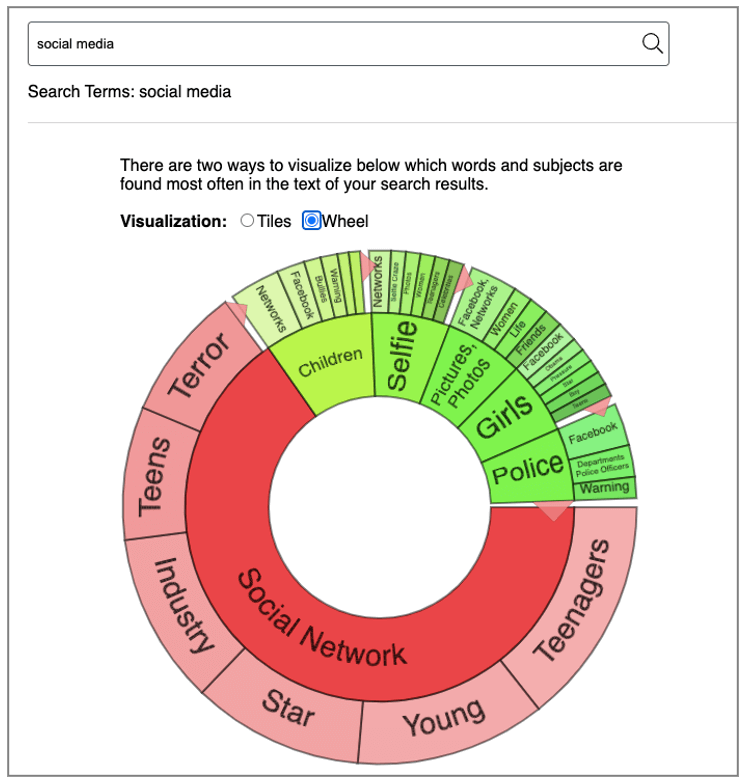
Tips and tricks for visual learners
As a visual learner myself, I am now going to share some of my tips and tricks for the visual learners reading this to ace their exams!
Mind Maps
When I first started writing my dissertation, one of my most useful resources was a large mind map, created during a brainstorming session. I cannot stress enough the usefulness of mind maps to me as a visual learner, as they clearly illustrate the different connections between ideas. Plus, mind maps can be as creative as the individual wants them to be, whether that means using different colours to represent different points or arguments, or using different areas of the mind map for certain periods of time. The possibilities with mind maps are endless and they’re a great starting point for any project or assignment, especially if you’re struggling to come up with ideas.
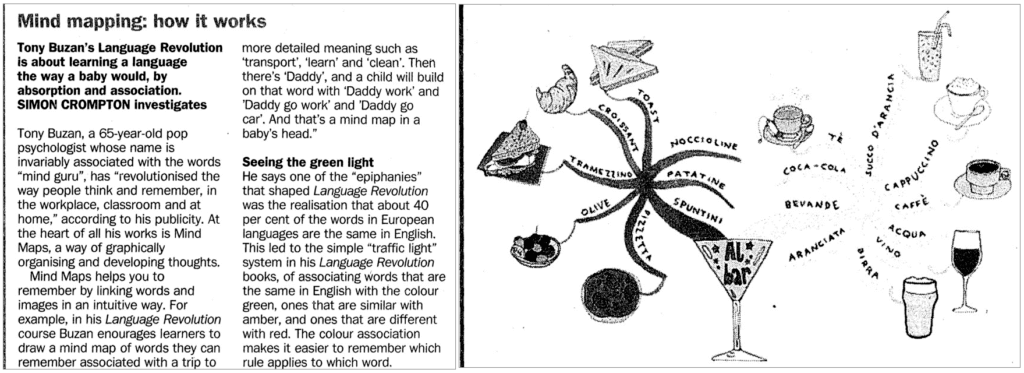
Diagrams
Another useful tool for visual learners are diagrams, like that made in the Topic Finder tool I demonstrated above. Diagrams are an easy way to provide individuals with an alternative way of understanding information, especially if they are finding it hard to conceptualise the information. Diagrams can provide students with a convenient way of condensing large sections of information and are especially useful to place on flashcards or in notes.
Physical Placement of Revision Aids
An easy way for visual learners to digest more information in your day-to-day life is by placing diagrams or other revision notes in easy-to-see locations, such as on a mirror or the fridge. Visual learners are often interested in their surroundings, thus a simple action like sticking a diagram on a mirror can lead to a more consistent interest in the information at hand.
The Benefits of Trying Different Learning Styles
Despite the benefits of knowing your learning style, there are problems associated with this approach to learning which are also important to acknowledge. It has been noted by several psychologists that this system can result in individuals being too strictly categorised into different groups – and that, as a result, they never experiment with other learning styles, even if they may benefit from doing so. This criticism is a valid concern, and draws attention to the importance of being open-minded about new ways in which you can study. Although I am a visual learner, if I’m feeling stressed or unmotivated I may turn to alternative ways of understanding information. For example, I may adopt auditory learning practices by reading an essay I have written out loud to check for mistakes.
Knowing how and when to consider different learning styles can drastically improve your revision. If you are struggling with a certain topic, trying a new learning style can be enormously beneficial, and can provide you with the motivation you need to focus. A well-rounded student recognises the importance of developing a range of learning techniques to ensure that they are adaptable as well as skilled and knowledgeable.
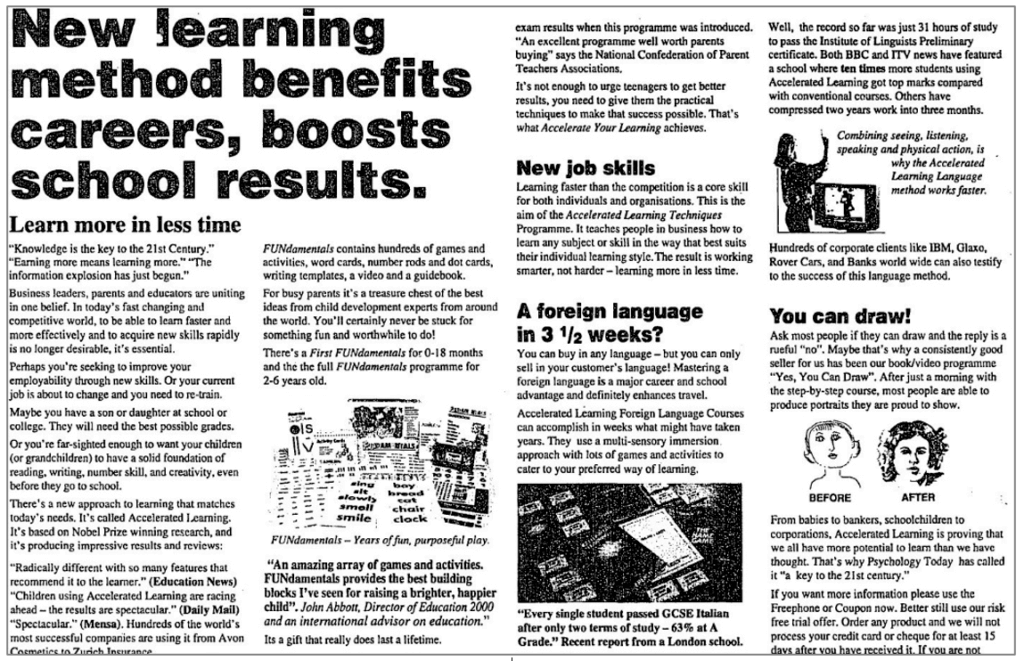
“New learning method benefits careers, boosts school results.” Times, 31 July 1999, p. 32[S2]. The Times Digital Archive, https://link.gale.com/apps/doc/IF0500961952/TTDA?u=bham_uk&sid=bookmark-TTDA&xid=647eb7b6
Research Your Own Learning Style to Supercharge Your Studies!
Learning styles provide you with a unique opportunity to encounter information and revise in the ways which best engage and motivate you. At the same time, knowing when to try a new approach can be just as beneficial. I hope that I have illustrated some helpful ways in which visual learners in particular can approach revision, such as creating mind maps and diagrams (including highlighting and colour-coding information within them), and by incorporating visual aids into your everyday life. Whether you’re a kinaesthetic, auditory or visual learner, I encourage you to see what the Gale archives have to offer in terms of the platform tools – and the advice contained within the sources. There are countless articles elaborating on the subject of learning styles which may help you better understand your own.
If you enjoyed reading about how knowing your learning style can improve your revision, click on the links below for some more helpful advice:
- Using Primary Sources in Revision and Exam Preparation
- Tips to Tackle Tough Academic Works
- Moving from Undergraduate to Postgraduate Study: Using Digital Archives More Proficiently
- How to Survive in the Jungle of Academia? Top Tips for University Freshers
- Top 10 Tips to Ace Your Dissertation
- How To Handle Primary Source Archives – University Lecturer’s Top Tips
- The Gale Primary Sources Learning Centers – A Student’s Perspective
- Coping at College – Research Resources and Mental Health
- How Gale Literature Provided Vital Support for My Dissertation
Or check out our For Students category for more tips and tricks!
Blog post cover image citation: “Writing on window”, image by @Kvalifik, available on Unsplash.com.

